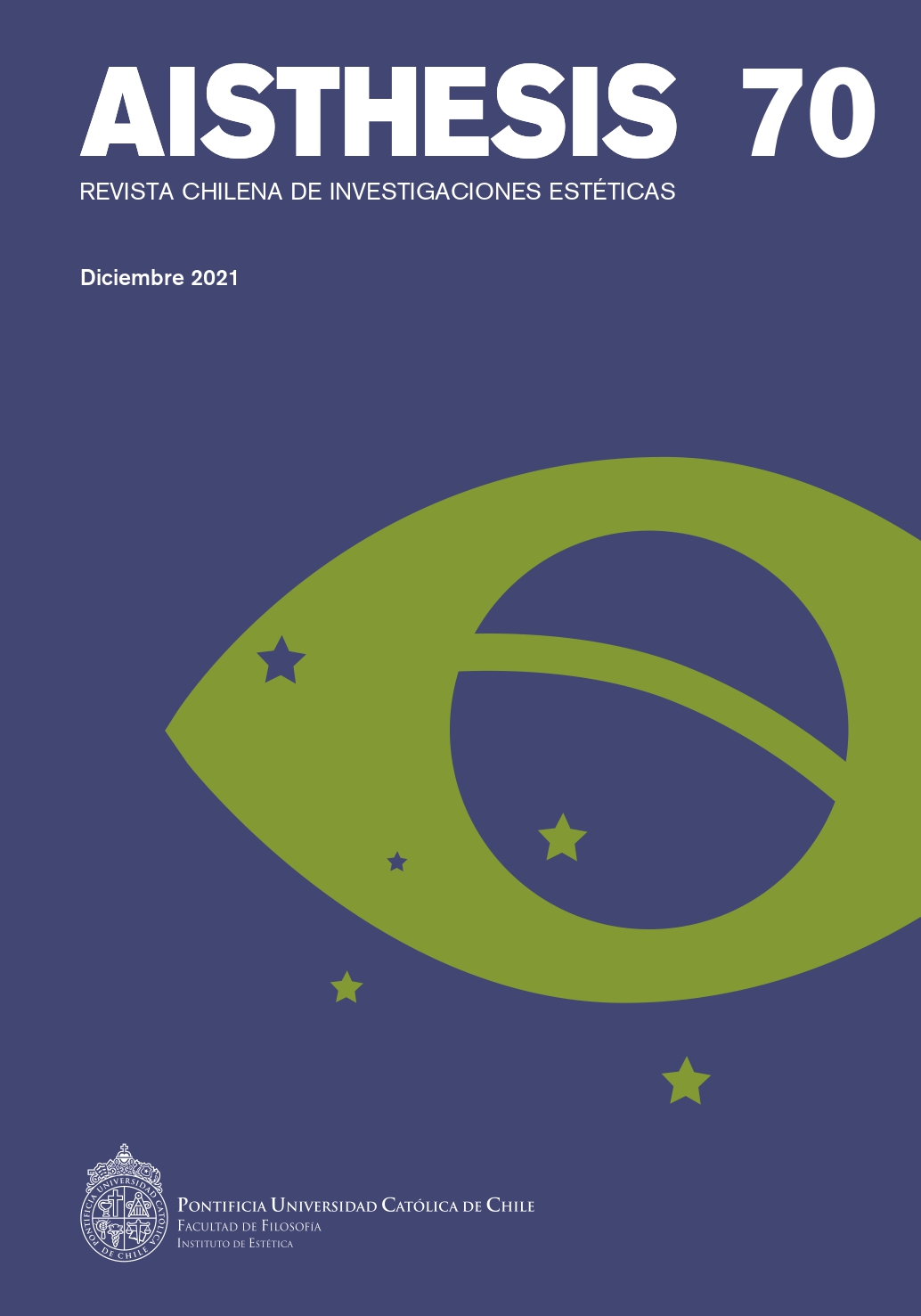Transvestite Prostitution in Latin American Chronicle: Literary Studies and Pathosformeln
Main Article Content
Abstract
This paper offers a proposal of a practical application of the concept of Pathosformeln coined by the German art historian Aby Warburg, in the field of literary studies, establishing a communicating vessel from the representative and visual images studied by this scholar to the mental images originated in the descriptions of a literary text, and the emotions they convey. For this, a varied corpus of eight Latin American chronicles is chosen, from modernists to the 21st century, whose theme is transvestite prostitution, then limiting the example of application to the exacerbation of femininity of the protagonists, and the point of view of the narrators in this regard, supported in turn by Judith Butler’s notion of gender performativity. Through textual quotes and comparison between the representations of the transvestite prostitute in these nonfiction texts, the applicability of the concept is discussed, as well as the differences with its widely studied use in the historiography of visual arts.
Downloads
Article Details

This work is licensed under a Creative Commons Attribution-NonCommercial-ShareAlike 4.0 International License.
All contents of this electronic edition are distributed under the Creative Commons license of "Attribución-shareAlike 4.0 Internacional" (CC-BY-SA). Any total or partial reproduction of the material must mention its origin.
The rights of academic works published in this publication belong to their authors., who grant to AISTHESIS: Revista Chilena de Investigaciones Estéticas the license for its use. The management of the permits and the authorization of the publication of the images (or of any material) that contains copyright and its consequent rights of reproduction in this publication is the sole responsibility of the authors of the articles
References
Barajas, María Josefina. Textos con salvoconducto: La crónica periodístico-literaria venezolana de finales del siglo xx. Colección Arte y Literatura. Caracas, Universidad Central de Venezuela, Ediciones de la Biblioteca – EBUC, Comisión de Estudios de Postgrado – FHE, 2013.
Becker, Colleen. “Aby Warburg’s Pathosformel as Methodological Paradigm”. Journal of Art Historiography, nº 9, 2013, pp. 12-36.
Burucúa, José Emilio. Historia, arte, cultura. De Aby Warburg a Carlo Ginzburg. Buenos Aires, Fondo de Cultura Económica, 2003.
Butler, Judith. El género en disputa: El feminismo y la subversión de la identidad. Barcelona, Paidós, 2016.
Castaño, José Alejandro. “Así es la vejez de los travestis”. SoHo, s. f., https://www.soho.co/historias/articulo/travestis-la-vejez-de-los-travestis/8418.
Didi-Huberman, Georges. La imagen superviviente: Historia del arte y tiempo de los fantasmas según Aby Warburg. Madrid, Abada, 2009.
Freedberg, David. “Memory in Art: History and the Neuroscience of Response”. The Memory Process: Neuroscientific and Humanistic Perspectives. Eds. Suzanne Nalbantian, Paul M. Matthews y James L. McClelland. Massachusetts, MIT, 2011, pp. 337-358.
Frías, Heriberto. La cárcel y el boulevard. Ciudad de México, Planeta, 2002.
García Márquez, Gabriel. El escándalo del siglo. Barcelona, Penguin Random House, 2018.
Lemebel, Pedro. Loco afán: Crónicas de sidario. Santiago, Seix Barral, 2017.
Modarelli, Alejandro. Rosa Prepucio: Crónicas de sodomía, amor y bigudí. Buenos Aires, Mansalva, 2011.
Munkholm Davidsen, Helle. “The Literary Representation of Reality.” Res Cogitans, vol. 13, nº 1, 2018, pp. 111-134.
Navarro Yarce, Elkin Andrés y Walter Alonso Bustamante Tejada. Homosexuales y travestis: Memorias de Guayaquil. Bogotá, Universidad de Medellín, 2015.
Novo, Salvador. La estatua de sal. Ciudad de México, Fondo de Cultura Económica, 2008.
Perlongher, Néstor. Prosa plebeya: Ensayos 1980-1992. Buenos Aires, Colihue, 1996.
Rotker, Susana. La invención de la crónica. México, Fondo de Cultura Económica, 2005.
Villoro, Juan. “La crónica, ornitorrinco de la prosa”. Antología de crónica latinoamericana actual. Ed. Darío Jaramillo Agudelo. Madrid, Alfaguara, 2012, pp. 577-582.
Warburg, Aby. Atlas Mnemosyne. Madrid, Akal, 2010.
Winkelvoss, Karine. “Devant Tadzio: Lire Thomas Mann avec Georges Didi-Huberman”. Penser par les images. Autour des travaux de Georges Didi-Huberman. Ed. Laurent Zimmerman
